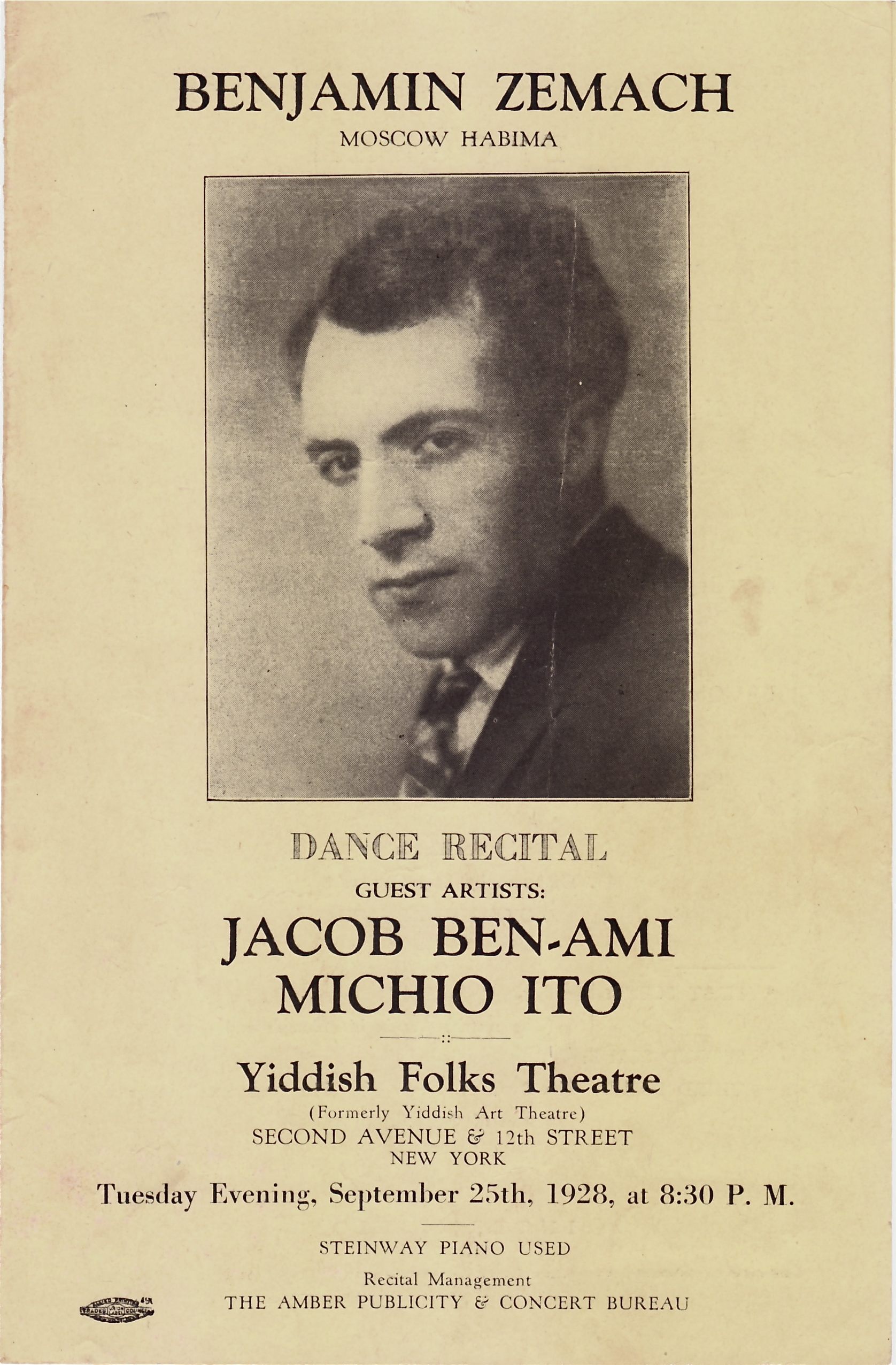The Art of Benjamin Zemach Produced by Miriam Rochlin
(1969)

Zemach’s work covered not only decades and continents, but various aspects of human experience and emotion. As a child he experienced the pogroms of the 1905 revolution in Russia, as a teen he experienced the cultural activities of Jewish Bialystok and the founding of his older brother’s Habima theater company and it’s move to Moscow. There he experienced Habima’s close contact with Konstantin Stanislavsky in his master classes when Zemach was approaching 20, and trained in early modern dance and ballet.
His clear gift for interpretation and the flexibility to bring his training to whatever medium appeared, allowed him to function not only in the Expressionistic theater and dance of the 1920s but to continue into choreographing the first Jewish dance work at the Hollywood Bowl, the lost-world Hollywood film “She,” for which he was nominated for an Oscar and the Jewish pageant “The Eternal Road” on Broadway directed by Max Reinhardt with music by Kurt Weill.
He is fully as great an actor as a dancer…
-L.A. Times, c. 1933
His every line, every movement sublime, perfect…
-Max Reinhardt, director, c. 1937

